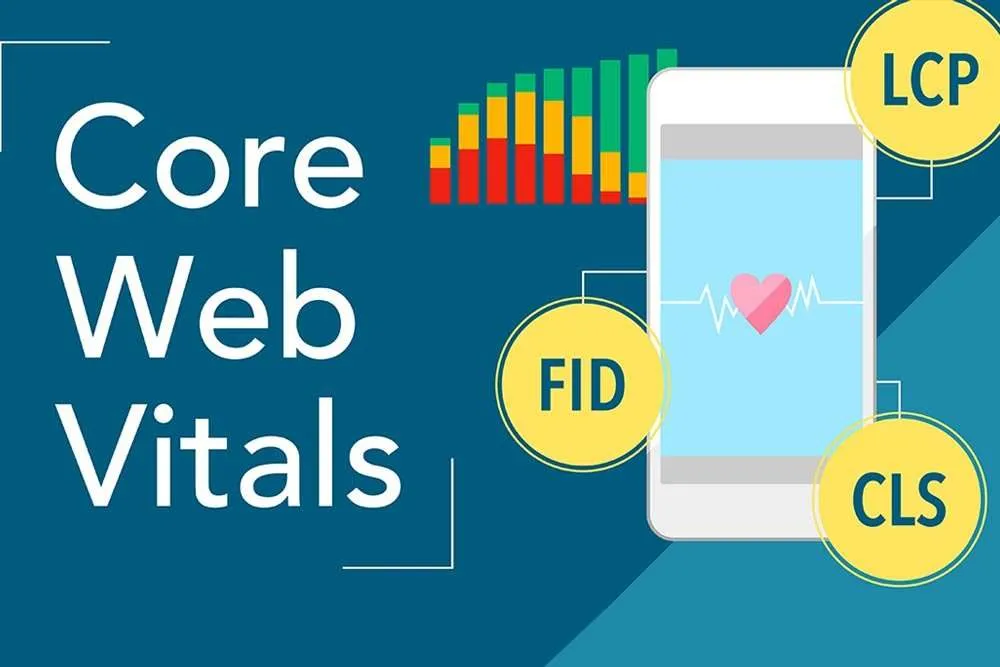Why Core Web Vitals Are Important for Your Website? According to the research team at Statista, mobile phone web browsing accounted for nearly half of all web traffic around the world (Statista). Mobile devices, not including tablets, began boosting web traffic beyond 50% at the beginning of 2017. As the world grows increasingly connected to the internet through phones, tablets, and computers, developing winning web practices becomes all the more important for businesses worldwide.
Maintaining a solid Google ranking to develop your website traffic requires a multifaceted approach and a better understanding of core web vitals. As a nationally recognized SEO agency, this is our specialty. Let’s dig into the concept so that you can build a better website using today’s best practices.
What Are Core Web Vitals?
Google is one of the dominant search engine indexes on the internet. Maintaining a high-level ranking on this search engine ensures that your content is seen by targeted audiences from every corner of the globe. Core Web Vitals focuses on the specific factors that Google’s algorithms consider to be important to a user’s experience.
Core web vitals can be broken down into three core measurements:
- Loading
- Interactivity
- Visual Stability
Upon launching Core Web Vitals as a way to signal rankings, businesses are now more focused than ever on ensuring a positive experience for their clients on the internet. Core web vitals are applied to all web pages as a way to measure user experience and interactivity.
Core Vital: Loading
Page load times are of the utmost importance for entrepreneurs and general web surfers alike. According to research performed by Google, the probability of a user bouncing from your website increases by 123% when loading takes longer than 10 seconds (Google).
As one of the most important core web vitals, loading times must be focused on to have any measure of expected success. Core Web Vitals by Google start by focusing on the Largest Contentful Paint, also shortened to LCP.
The LCP operates as a timer that determines exactly how long your website will take to load its largest elements. When your LCP is under 2.5 seconds, consumers are ecstatic. When your LCP is over 4 seconds, there is still work to be done.
The most common causes of poor loading times include large images, third-party scripts, and improper coding.
Core Vital: Interactivity
A website isn’t just there to look good, it must also be interactive and fluid. Core Web Vitals will focus on First Input Delay, otherwise known as FID. FID measures the time between a user’s initial interaction and how long the action takes to process. Under 100 milliseconds is considered great. Websites that take longer than 300 milliseconds to catalog and render an action are in the ‘needs improvement’ range.
Interactivity and User UI can both struggle as a result of poor scripting, often associated with JavaScript. Other elements of user interactivity and page experience will revolve around secured browsing, mobile-friendliness, and intrusive interstitial guidelines.
Core Vital: Visual Stability
As Google continues to develop its new Core Web Vitals experience, page owners will need to spend more time developing and solidifying the visual stability of their platform. When a website or platform struggles visually, the website itself can experience a catastrophic downturn in traffic. Whether you are an e-commerce platform or a new brand, visual stability is of the utmost importance.
Google’s introduction of the Cumulative Layout Shift metric means that going forward, Google will analyze CLS scores in fractions, summing up different time frames with a maximum duration of five seconds. Each window that meets its five-second duration will then close before shifting to the next (Webpagetest.org).
The faster a website can stabilize between shifts, the better its CLS score will become. The higher your CLS score, the better it will be ranked by Google during analysis.
The Importance of Core Web Vitals
Core web vitals impact the user’s experience on your platform and how your platform is indexed and ranked on Google. Core Web Vitals impact your page’s experience score which will then be reflected in its search engine optimization ranking.
While any change to the existing SEO structure is bound to get attention, Google understands that businesses will need time to acclimate to the change. Google has since announced that businesses will have upwards of a year to finish modifying their core web vitals in anticipation of the changeover.
Other aspects of core web vitals benefit
- Improved User Experience
- Better Page Rankings
- Streamlined User Experience
How to Plan for Core Vitals?
Core vitals should be planned and tested throughout the website design and development process, and it helps to work with a website design agency that specializes in SEO-friendly websites. If you’re unsure about a website company’s proficiency regarding core vitals, ask for examples and test them with GT Metrix. This should allow you to see if a potential website company is prepared to address core vitals before you even begin.
About Actuate Media
Actuate Media is a data-driven digital agency that manifests both B2C and B2B relationships. With a focus on conversion-oriented digital advertising. If you aren’t already the top website in your category, our SEO team can help, contact Actuate Media today to discuss your SEO optimization and content generation needs.





A fast, reliable web hosting and a good, clean theme. These are among the most important factors to consider when working on core web vitals, from my experience.
What do you think?
Very informational post. Thanks for sharing this post. As a web developer, it will help us a lot.
Very well explained blog. Thanks for sharing this blog.
as a seo expert your blogs are so useful to me .. thanks for sharing this kind of contents